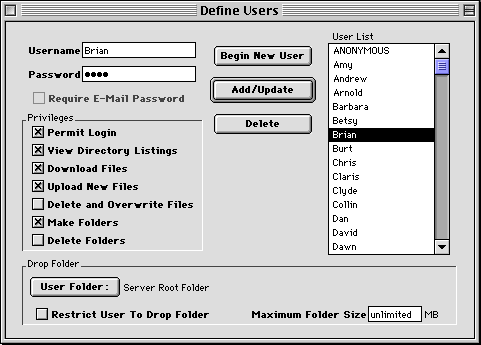
Figure 12: Create your own set of users for faster FTP services.
Rumpus includes two distinct methods for applying security to your server. First, you can use File Sharing "Users and Groups" authentication, which is part of the MacOS. This model is effective, especially if you are upgrading from another Mac FTP server that applies security in a similar manner. However, File Sharing also has several limitations and imposes a substantial performance penalty on the server.
For many server administrators, defining users directly in Rumpus using the built-in security model may be faster and easier. The server will also run faster, because the overhead of File Sharing is avoided. Finally, Rumpus Pro offers a way to increase the number of user accounts available, by avoiding File Sharing's 100 user limit. (The standard version of Rumpus supports up to 32 user accounts.)
Creating and maintaining users in Rumpus is quick and easy, and is done using the "Define Users" window. To open the window, Choose "Define Users..." from the "File" menu, or type "Command-U".

To create an account on your FTP server, click the "Begin New User" button to clear the Username, Password, and other detail fields used to define the user. Note that this step is often not required, and you can create new users simply by typing over the fields of another user. This allows you to quickly create multiple user accounts with the same set of privileges. To create multiple accounts, enter the first user and set the privileges accordingly. When the first user is defined correctly, click "Add/Update" to add the new account to the list. Next, simply enter the Username and Password for the next user, changing privileges as needed and clicking "Add/Update" when done. This process can be repeated for each user you need to define, without having to click "Begin New User" and start from scratch each time.
To update a user account, simply click on the name in the User List, make the necessary changes, and click "Add/Update".
Remember, any time you create or update a user account, you must click the "Add/Update" button to save the changes to the list.
To delete users, select the user in the list and click "Delete". No warning will be given when you delete an account, but all of the user information will remain in the detail fields at the left. So, if you accidentally delete a user, simply click "Add/Update" to add the account back to the list.
The ANONYMOUS user cannot be removed from the list. To disable anonymous use, simply turn off all privileges for the ANONYMOUS user. When the anonymous user is selected in the list, you can also set the "Require E-Mail" option, which forces anonymous users to enter a valid e-mail format for their password.
Also note that when users are defined in Rumpus directly, you have the option of selecting any folder to use as a drop folder for each user. The folder name does not need to match the user name, and in fact, it doesn't even need to be directly in the FTP server root.
The interface has been designed to allow you to very rapidly enter multiple users. The tab key will switch between the username and password entry fields, and the return key will not only add the user to the list but reset the cursor so that you can start typing the next username. This allows you to enter a list of users by typing the username, tab, the password, and return. After each user has been entered, Rumpus will be ready to immediately accept the next. Privileges and drop folder information remain intact so that you can enter a series of users with the same privileges without extra work.
Rumpus also allows you to create user accounts that don't have passwords. If you do not want to require a password for a particular account, enter an asterisk ("*") as the password. Similarly, you can require that the user enter an e-mail address as the password by entering an at-sign ("@") as the password. Like the "Require E-Mail Password" option available for the anonymous user account , the e-mail address will be verified only for format, and is not guaranteed to be a real mail account address.
Other permissions include the ability to download, upload, delete, and see files and/or folders.
Finally, a maximum size can be set on the drop folder, which restricts the amount of hard drive space available for the user. The Maximum Folder Size is set in megabytes, and once the maximum size has been reached, the user will be unable to upload additional files, until old files are deleted to create adequate hard disk space.
Copyright © 1997-9 Maxum Development Corporation
http://www.maxum.com/